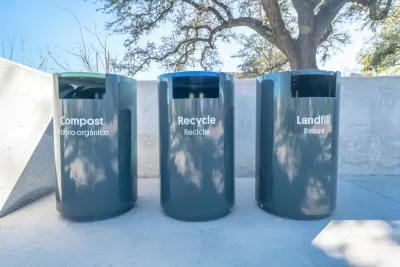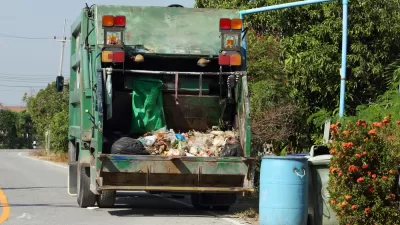The city aims to eliminate the majority of landfill waste by 2040.

A new Comprehensive Plan from Austin Resource Recovery (ARR) charts the city’s path to zero waste, a commitment the city fell behind on after only diverting 40 percent of materials from landfills by 2020, short of its goal of 75 percent.
As Hannah Rossi reports in The Austin Chronicle, the plan identifies the city’s population growth, the increase in “abnormal weather events,” and waste stream privatization as challenges to achieving its zero waste by 2040 goal. According to the plan, privatization “precludes the city from being able to collect accurate data on its progress towards achieving zero waste, as companies fear that any numbers they share will become public record – and ammunition for competitors.”
The plan highlights the urgency of “more infrastructure, more recycling and circular economy education programs, and more access to digital tools and collection services.”
The agency says it has started work on several projects including “an EPA-funded furniture repair and reuse warehouse,” but “acknowledges that there is a long road ahead to ticking off the more than 60 near- and long-term goals it lays out in its Comprehensive Plan.”
FULL STORY: Austin Resource Recovery Charts a New Course to Achieving Zero Waste

Alabama: Trump Terminates Settlements for Black Communities Harmed By Raw Sewage
Trump deemed the landmark civil rights agreement “illegal DEI and environmental justice policy.”

Planetizen Federal Action Tracker
A weekly monitor of how Trump’s orders and actions are impacting planners and planning in America.

The 120 Year Old Tiny Home Villages That Sheltered San Francisco’s Earthquake Refugees
More than a century ago, San Francisco mobilized to house thousands of residents displaced by the 1906 earthquake. Could their strategy offer a model for the present?

Indy Neighborhood Group Builds Temporary Multi-Use Path
Community members, aided in part by funding from the city, repurposed a vehicle lane to create a protected bike and pedestrian path for the summer season.

Congestion Pricing Drops Holland Tunnel Delays by 65 Percent
New York City’s contentious tolling program has yielded improved traffic and roughly $100 million in revenue for the MTA.

In Both Crashes and Crime, Public Transportation is Far Safer than Driving
Contrary to popular assumptions, public transportation has far lower crash and crime rates than automobile travel. For safer communities, improve and encourage transit travel.
Urban Design for Planners 1: Software Tools
This six-course series explores essential urban design concepts using open source software and equips planners with the tools they need to participate fully in the urban design process.
Planning for Universal Design
Learn the tools for implementing Universal Design in planning regulations.
Clanton & Associates, Inc.
Jessamine County Fiscal Court
Institute for Housing and Urban Development Studies (IHS)
City of Grandview
Harvard GSD Executive Education
Toledo-Lucas County Plan Commissions
Salt Lake City
NYU Wagner Graduate School of Public Service





























